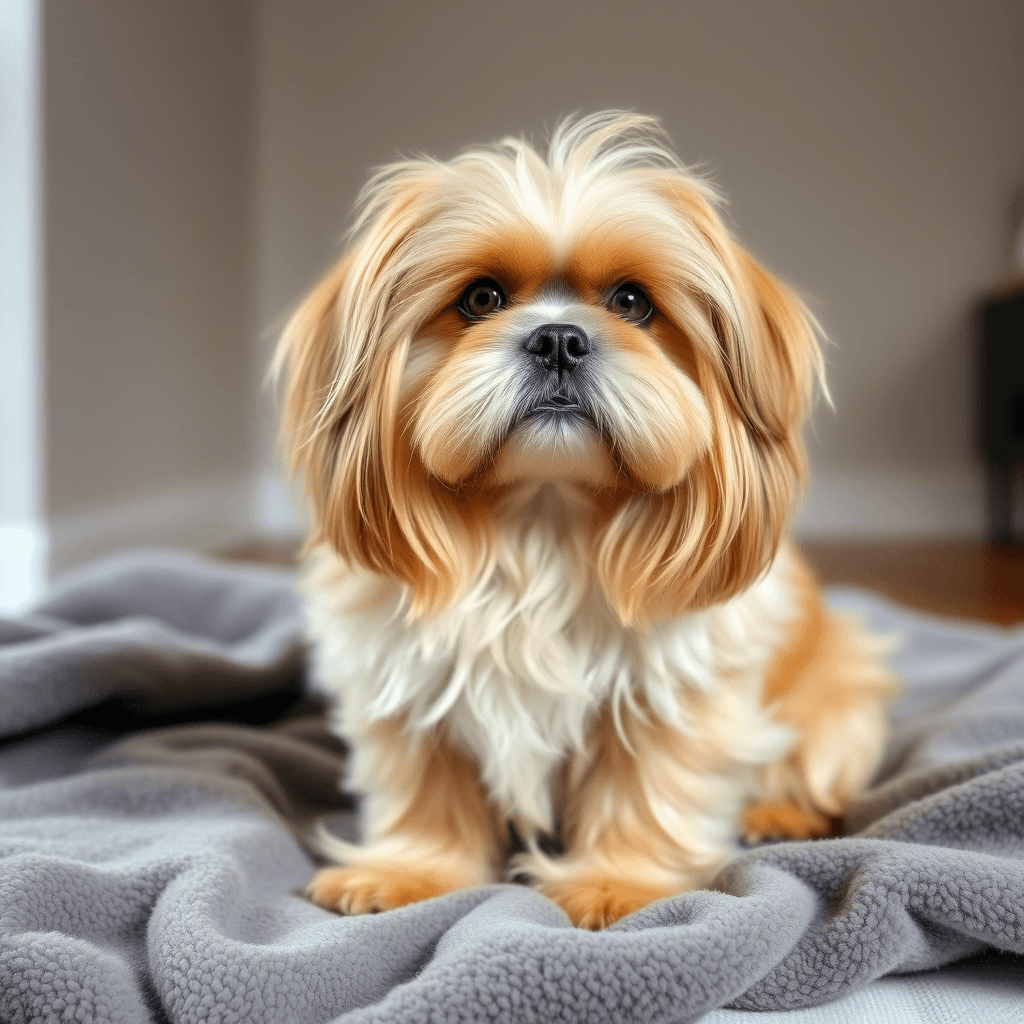The Lhasa Apso is a small but mighty dog breed that originated in the Himalayan mountains of Tibet. Known for its flowing coat and watchful eyes, the Lhasa Apso has long been revered as a sentinel in monasteries and palaces. Though petite in size, this breed offers a large personality, a strong sense of loyalty, and an independent streak. For Indian dog lovers looking for a charming yet protective indoor companion, the Lhasa Apso could be the perfect match—provided you're ready for some grooming commitment.
Protective Nature
Despite their adorable appearance, Lhasa Apsos are surprisingly fierce when it comes to guarding their home. Bred as indoor watchdogs in Tibetan monasteries, they are naturally alert, suspicious of strangers, and bark readily to signal any perceived threat.
Key Traits:
- Loyal to family members, often bonding deeply with one person.
- Reserved and wary of unfamiliar people or pets.
- Intelligent and independent, sometimes displaying a stubborn streak.
While they’re not aggressive by default, early socialization is important to prevent them from becoming overly territorial or anxious around guests.
Grooming the Long Coat
A standout feature of the Lhasa Apso is its luxurious, dense double coat. This coat served as protection from the harsh Tibetan climate but now requires regular maintenance in domestic settings.
Grooming Tips:
- Daily brushing is essential to prevent matting and tangles.
- Bathing every 2–4 weeks with a mild dog shampoo keeps the coat clean and healthy.
- Regular trimming around the eyes and feet improves comfort and hygiene.
- Professional grooming every 4–6 weeks is recommended if you’re not keeping the coat in a puppy cut.
Neglecting their coat can quickly lead to painful knots, skin irritation, and hygiene problems.
Indoor Living Needs
Lhasa Apsos adapt well to apartment living due to their small size and moderate energy levels. They don’t require a large yard but do need mental stimulation and moderate daily walks.
Indoor Requirements:
- A safe, quiet corner where they can retreat.
- Soft bedding and room-temperature conditions (they’re sensitive to excessive heat).
- Toys and puzzles to keep them mentally engaged.
- Access to regular walks and light playtime to burn off energy.
Do’s and Don’ts
✅ Do’s:
- Start training and socialization early.
- Groom regularly to prevent tangling and skin infections.
- Offer positive reinforcement and gentle correction.
- Keep them indoors, especially during hot Indian summers.
- Schedule regular vet checkups.
❌ Don’ts:
- Don’t leave them alone for long hours—they bond closely with their people.
- Avoid harsh discipline; they don’t respond well to yelling or force.
- Don’t neglect grooming—it’s crucial for their health.
- Avoid excessive exercise or play in extreme heat.
Common Eye and Skin Issues
Lhasa Apsos are prone to a few breed-specific health conditions, especially related to their eyes and skin.
Eye Issues:
- Progressive Retinal Atrophy (PRA): A genetic condition leading to vision loss.
- Dry Eye (Keratoconjunctivitis Sicca): Decreased tear production.
- Blocked tear ducts and eye infections: Caused by long facial hair.
Skin Issues:
- Allergies: Can cause itching, hot spots, or rashes.
- Sebaceous adenitis: An autoimmune skin disorder.
- Matted fur: Can lead to bacterial infections if not groomed properly.
Routine grooming, regular eye cleaning, and prompt attention to any itching or redness are essential for prevention.
Tips for Raising a Lhasa Apso in India
- Climate Care: Keep your Lhasa indoors during summer months. Use air-conditioning or fans to prevent heatstroke.
- Hydration: Always provide fresh water, especially during humid weather.
- Diet: Feed a high-quality, easily digestible diet. Avoid greasy or spicy foods.
- Vet Access: Choose a vet experienced with small and long-haired breeds.
- Paw Protection: During hot months, walk them on grass or use booties to avoid burnt paws.
- Cultural Adjustment: Socialize them with local sights and sounds early to prevent anxiety.
Conclusion
The Lhasa Apso may be small, but it carries the heart of a lion and the elegance of royalty. With the right care, grooming, and environment, they make deeply affectionate and loyal companions. In India’s unique climate, a little extra attention to comfort and coat care will go a long way in ensuring your Lhasa thrives both in health and spirit.
Frequently Asked Questions (FAQs)
Q: Are Lhasa Apsos good with children?
Q: How much exercise do they need?
Q: Do they shed a lot?
Q: Are they hypoallergenic?
Q: How long do they live?

About SniffnTail
SniffnTail is your go-to destination for everything pets. From helpful advice, tips, and insights to thoughtfully selected products and resources, we’re here to support pet owners at every stage of their journey. Whether you're caring for a playful pup, a wise old cat, or anything in between, SniffnTail offers tools and knowledge to make pet parenting easier and more joyful.
Related Articles
 Dog Breeds • 7 min read
Dog Breeds • 7 min readDalmatians: The Spotted Companions with Big Personalities
Learn all about the Dalmatian dog breed—its personality, care needs, grooming, and why it's both loved and misunderstood by dog lovers.
 Dog Breeds • 25-30 minutes
Dog Breeds • 25-30 minutesThe Definitive Tibetan Mastiff Dog Guide: Health, Care, and Beyond
Uncover everything you need to know about the majestic Tibetan Mastiff. This comprehensive guide, written by a board-certified veterinarian, covers their unique health needs, behavior, training, nutrition, and provides expert insights to help you raise a healthy, happy, and well-adjusted Tibetan Mastiff. Learn from 15+ years of clinical experience, backed by scientific research.
 Dog Breeds • 35-45 minutes
Dog Breeds • 35-45 minutesThe Ultimate Tibetan Terrier Dog Guide: Health, Care & Temperament
Unlock the secrets to a happy, healthy Tibetan Terrier! This comprehensive guide from a board-certified veterinarian covers everything from their unique temperament and grooming needs to common health concerns, nutrition, and training. Gain expert insights and practical tips to provide the best life for your Tibetan Terrier.

